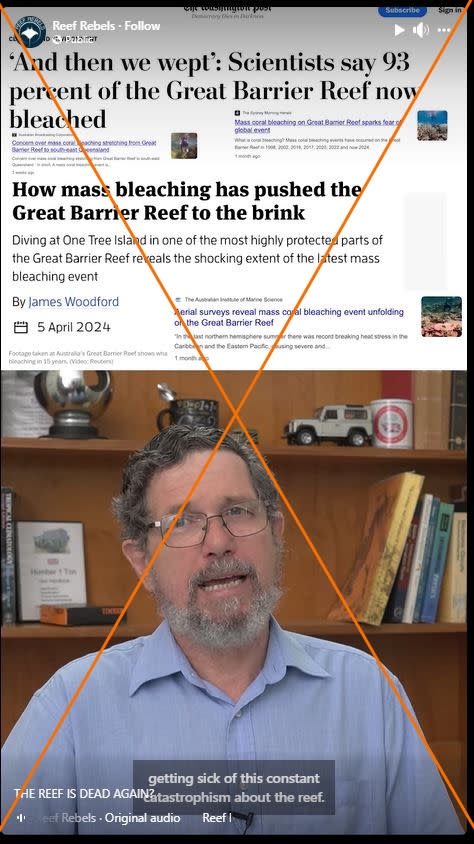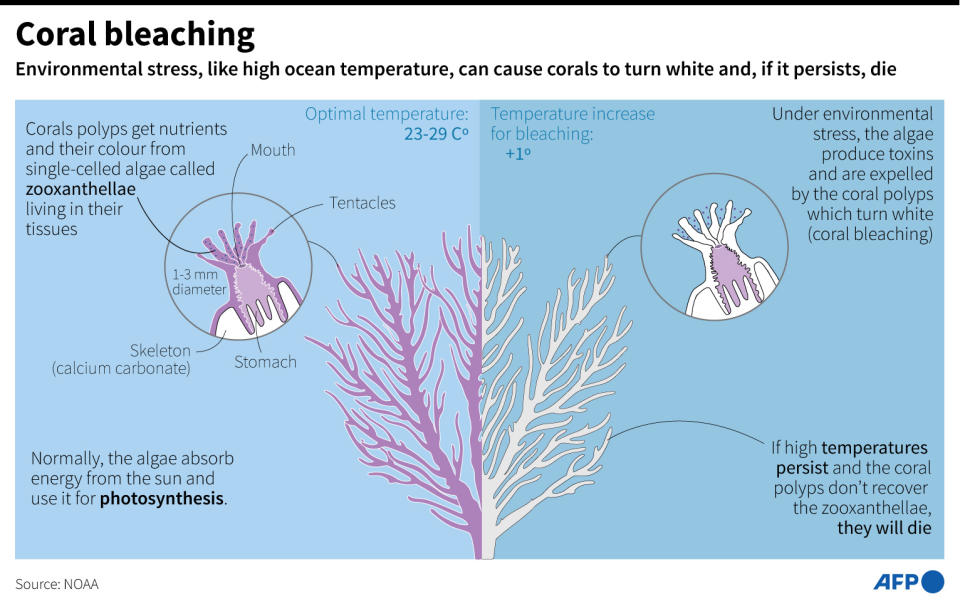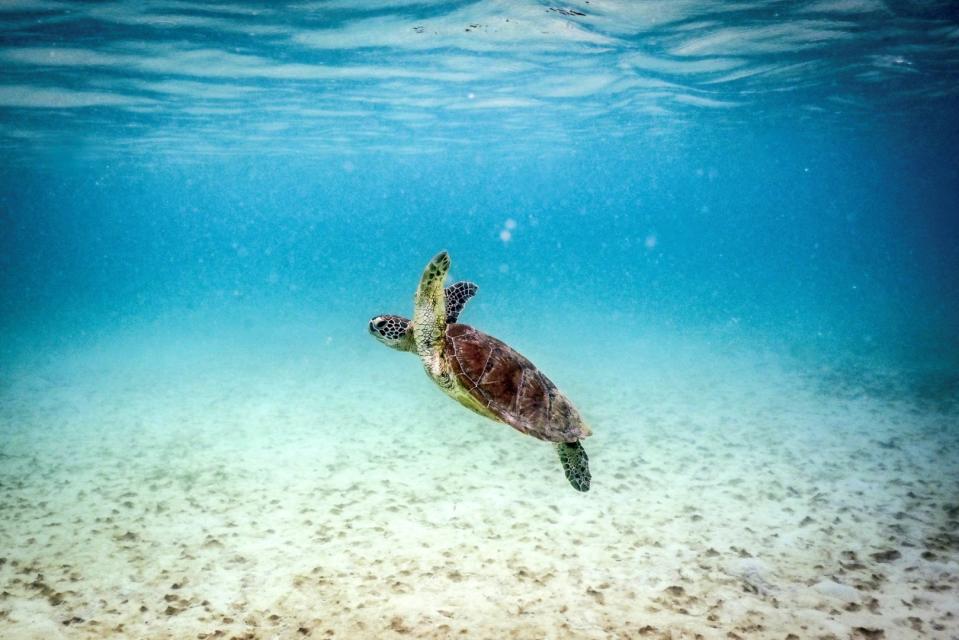
[ad_1]

Ridd, a signatory of a 2008 letter (archived here) disputing the science on climate change, has previously made similar statements about Australia’s Great Barrier Reef and the recent growth of acropora corals.
The region experienced its worst bleaching event during the summers of 2023 and 2024, when water temperatures rose and corals expelled microscopic algae to survive.
Ridd is correct in saying coral covers have grown in the Great Barrier Reef over the past several years, but scientists told AFP he paints an overly rosy picture of the situation.
“Dr Ridd has used this claim as evidence that the threats to the Great Barrier Reef are overstated, which is misleading,” Sara Cannon, a postdoctoral research fellow at the Institute for Oceans and Fisheries at the University of British Columbia (archived here), said April 23, 2024.
The Australian Institute of Marine Science (AIMS) said in an April 23 statement that the mass bleaching events of the past decade are unprecedented.
“Previous mass bleaching events on the Great Barrier Reef have occurred in 1998, 2002, 2016, 2017, 2020, 2022 and this year, 2024,” the agency told AFP.
“Prior to these years, there is no evidence of such widespread events in the Great Barrier Reef’s 500-year coral record history.”
Coral growth?
A report AIMS sent to AFP shows coral covers grew in all three regions of the Great Barrier Reef between 2012 and 2023.

“In 2012, it looks like coral cover was very low due to storms/disease outbreaks,” said Jennifer Smith, director of the Marine Biology Research Division of the Scripps Institution of Oceanography (archived here). “But it has recovered since then. So yes, it is more abundant now than it was then.”
However, she noted April 24, 2024 that coral abundance can “change rapidly in association with disturbances.” Cannon said the recent upward trend is “likely temporary,” as the species involved are more sensitive to breakage from storm-driven waves.
And while coral cover is a robust measure of reef conditions and trends, it does not take into account biodiversity changes.
“Much of the very rapid recovery that occurred following previous bleaching events just a few years ago was of the very fast-growing but rather heat-sensitive staghorn corals,” said Andrew Baker, a marine biologist at the University of Miami (archived here), on April 24. That species includes acropora corals.
He added: “It’s very likely that the high coral cover masks a cryptic loss of resilience that means that the system is much less robust than it previously was, and which might help explain why we are having the worst bleaching event on the Great Barrier Reef right now.”

Jonathan WALTERJean-Michel CORNUAFP
Even if such corals recover, National Oceanic and Atmospheric Administration (NOAA) scientists Jacqueline De La Cour and Derek Manzello (archived here and here) said the reefs will generally suffer lasting effects such as slower growth, higher vulnerability to diseases and compromised reproductive output.
“Recovery is certainly possible but becomes increasingly challenging as bleaching events become more frequent and more severe,” they told AFP on April 23.
No reef loss?
On his YouTube channel, Ridd emphasizes the “brilliant” state of the Great Barrier Reef, noting that “we haven’t lost a single reef since Captain Cook sailed down this coast in 1770” (archived here).
Terry Hughes, director of the Australian Research Council Centre of Excellence for Coral Reef Studies (archived here), told AFP on April 23, 2024 that reefs “are geological structures that persist for millennia,” but it is key to examine how “the mix of species that occur on or near reefs changed in recent times.”

DAVID GRAYAFP
Hughes said many iconic species of the Great Barrier Reef — including turtles and dugongs (archived here and here) — are endangered due to human-caused disturbances in their environments.
The United Nations Intergovernmental Panel on Climate Change says “further reef degradation due to future climate change now seems inevitable, with serious consequences for other marine and coastal ecosystems” (archived here).
AFP has fact-checked other misleading claims about global warming’s impact on reefs here.
[ad_2]
Chidera
Hmmm